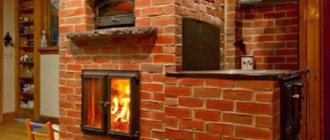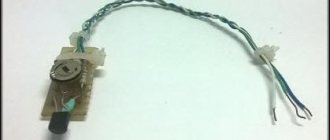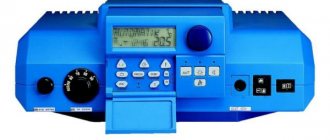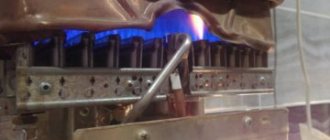The desire to save on utility costs is common to most of us. And you must agree that switching to the use of natural gas for cooking and heating is the most optimal way of such frugality. But ventilation in houses with gas stoves must be built according to very strict rules.
You will learn everything about the requirements for installing a kitchen exhaust system in our article. We will introduce you to the regulations of the regulatory documentation, covering in detail all aspects of this difficult issue. Let's look at standard options for organizing an air mass removal system.
Selecting and installing an exhaust structure
Principle of operation
System options
Installation features
Suspended structures
Built-in devices
Island models
The efficiency of exhaust equipment depends on the correct selection and proper installation. Power, performance, hood height above the gas stove - all these parameters must strictly comply with special requirements. Otherwise, the device will not be able to fully purify the air. Therefore, we will analyze the main points of selection and installation.
The principle of operation of the exhaust device
In the process of cooking food, not only appetizing smells appear in the house. Particles of soot, grease and exhaust gas accumulate above the stove and gradually rise along with the heated air flow, where they enter the operating area of the system. There are three main types:
Flow or circulation
The air flow enters the housing, from where it is supplied to the opening of the ventilation shaft and removed outside. The design assumes the presence of a grease filter, which retains the largest fragments of contaminants, and a fan that creates draft. There are models that not only remove, but also supply fresh street air. The equipment must be equipped with an air duct that connects it to the ventilation shaft.
@ Instagram kitchen_room_design
Flow hoods are connected to the ventilation shaft. Such models, as a rule, are distinguished by greater power and performance.
Recirculation
The flow coming from the kitchen passes through a filtration system, where it is cleaned of impurities and fed back into the room. The degree of purification depends on the type and number of filters. There are at least two of them: coarse fat and carbon, which traps small particles and odor. Structurally, the equipment differs from flow-through equipment in the presence of a larger number of filters and the absence of an air duct, since connection to a ventilation duct is not required.
Combined
Combines the capabilities of the first and second options, works in circulation and recirculation modes. An air duct connecting the equipment to ventilation is required. It can be very convenient if the ventilation duct periodically does not work for some reason. At this time it operates in recirculation mode.
Flow-through models, as a rule, are distinguished by greater power and performance. They are less demanding to maintain and do not require regular investments in the purchase of consumables. But they can only be installed where it is possible to connect to proper ventilation. Otherwise, recirculation equipment is used. It is important to choose the right type of product, since this determines how it will be installed.

@ Instagram kitchen_rostovdon
The choice of hood type depends on its operating conditions. In addition, all systems, regardless of their type, differ in the installation method. This is the second important point that determines the choice of the right product.
General information
If there is no ventilation in the kitchen or it works ineffectively, this can lead to a number of negative consequences:
- As a result of increased humidity, mold will begin to appear on the walls.
- Grease and soot will settle on the surface of the finishing and furniture, and accordingly the room will quickly lose its attractive appearance and become unusable.
- The smells of food and burning during cooking will spread throughout all areas of the home.
In addition, as mentioned above, when gas burners operate, gas emissions occur, which have a toxic effect on the human body. Thus, effective ventilation is, first of all, the safety of the residents of a house or apartment, as well as the durability of kitchen furniture and decoration.
Therefore, the requirements for ventilation of a kitchen with a gas stove are the most stringent - the standard air flows here must be at least 70 cubic meters per hour.
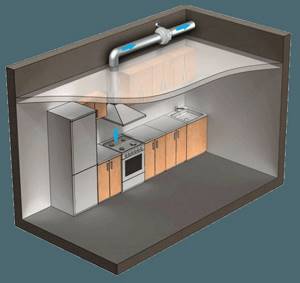
Exhaust ventilation diagram
Hood for a gas stove: a variety of options
All systems, regardless of their type, differ in the installation method. This is the second important point that determines the choice of the right product. Some difficulty lies in the fact that sellers create confusion by distinguishing models by their appearance: flat, domed, inclined, etc. In fact, they can all be divided into three groups:
Hanging
These hoods are mounted on the wall above the stove. The fastenings are located on the back of the case. Externally, they can be very different. Inexpensive products with a simple design look like small rectangular boxes. More expensive inclined models attract modern design. There are also fireplace or dome devices with large, originally designed exhaust hoods. But they are attached to the wall anyway.
Built-in
Such structures are installed inside furniture, most often a cabinet for a set. Other options are also possible, for example, assembling a separate original cabinet. The building is completely covered with a furniture facade. The lower working part of the device, into which air is drawn in, and the control panel remain outside. The air duct, if provided, is also located inside the headset. If possible, the conclusion is made as close as possible to the ventilation hole. It is easier to follow this rule in a private house, where it is easier to exit where needed.
Island
Relatively new systems. Their main difference is that they are fixed to the ceiling above the slab, significantly removed from the wall. Used in island-type kitchens. The main difficulty in installing such models is connecting the air duct, since the distance to the ventilation shaft can be significant. Although in some interiors, for example, in the loft style, engineering communications will fit perfectly.

@Instagram irinabunova_designer
Island hoods are attached to the ceiling. The main difficulty in installing such models is the supply of an air channel.
When making a choice, it is important to pay attention to the possibility of connecting an air exhaust duct and the distance from the shaft to the installation site of the exhaust system. This will help you choose the right type of device and method of mounting it. Then they select power, performance, etc.
Devices used to supply air to rooms
To speed up the supply of air into the room, special valves are used, mounted in the walls, doors, and window frames of the premises, ensuring the flow of fresh air:
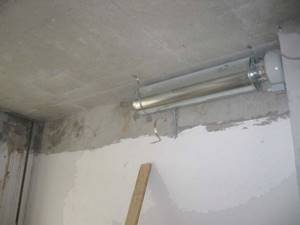
- a special window valve built into the frame can operate in manual and automatic mode;
- a special wall valve is installed in the air duct provided for by the building design in the external wall;
- A special ventilator is installed at the bottom of the door, filtering and heating the air.
Installation features
Self-installation of the exhaust device is carried out taking into account the technical nuances, which we will now discuss.
Distance from gas stove to hood
There are standards that determine the height of installation. Under no circumstances should they be ignored. The distance varies from 750 to 850 mm. The minimum value will be justified if you purchase low-power equipment; high-power models can be placed higher. The device cannot be lowered lower unless permitted by the manufacturer.
The reason is that open fire can rise quite high. The hood may catch fire, especially if its filters have not been cleaned for a long time. Old grease that accumulates on the filter grid easily catches fire and will be difficult to extinguish. Even if a fire does not occur, a device lowered too low will heat up, which will not have the best effect on its service life.

@ Instagram kitchen_room_design
The exhaust device must be raised above the stove to a safe distance. The reason is that an open fire can rise quite high.
Preparing the installation site
Particular attention should be paid to the place where you plan to hang the structure. The strength of the wall must be checked; it may need to be strengthened. In small kitchens, gas pipes can interfere with securing the hood. It happens that they pass through the place of future attachment. If possible, it is best to move the stove to another location, but this does not always happen.
There are two more options to solve the problem. The first is expensive and troublesome. It involves moving pipes, which is done by representatives of the gas company after a preliminary statement. The second is to place a wooden block under the fastener, the thickness of which will be greater than the diameter of the pipe. A cut is made in the wooden part for the pipe, after which it is securely fixed to the wall. The equipment is attached from above.

@ Instagram kitchen_room_design
If gas pipes interfere with the installation of the hood, they are sometimes moved to another location. Such work is carried out by representatives of the gas company after a preliminary application.
Duct length and configuration
It is best that its length is minimal and its shape is simple. Standards developed for ventilation do not recommend choosing complex trajectories with turns. Each turn reduces the power of the product by 5-10%, since it reduces traction. The length of the channel is also important because it affects the efficiency of the device. The higher it is, the worse the device performs.
You can choose different air ducts. The easiest way is to install a metal corrugation, which easily bends and takes the desired shape. However, the result is not very attractive in appearance. For this reason, the corrugation is covered with decorative overlays. The rigid plastic box includes straight parts and a set of adapters. They are more difficult to assemble, but such a channel looks aesthetically pleasing.
The ventilation shaft for the boiler, column and exhaust device cannot be common. Separate ones should be arranged. Before installation, a check valve is installed on the ventilation hole; it is also called a firecracker. When the draft is “turned over”, it will not allow the contaminated air flow to return to the room. The easiest way is to install a factory-made unit, but if you wish, you can assemble it yourself.

@ Instagram om_interiordesign
Unpresentable air ducts are covered with decorative boxes. For example, in a hard plastic box. They are more difficult to assemble, but such a channel looks aesthetically pleasing.
How to install a hood over a gas stove: instructions for a hanging model
Devices of this type are installed quite simply. The work is carried out as follows:
- We carry out markings. To do this, mark the height of the lower edge of the body, then determine the center line. We attach to the received outlines the template that comes with the equipment. If it is not there, we outline areas for fasteners.
- We are preparing the fastenings. We drill holes and insert plastic inserts into them.
- We install the brackets and fasten them securely.
- We hang the case on the brackets and fix it.
All that remains is to connect the device to a properly assembled air duct and to the network.

@ Instagram avtor_studio
Hanging models are attached to the wall above the stove. Devices of this type are installed quite simply.
- Ventilation and air conditioning
Is it possible to connect a kitchen hood to ventilation and how to do it
Requirements for organizing the ventilation system
All technical requirements for installing ventilation systems are described in detail in SNiP 2.04.05, II-35. The main points are as follows:
- Near the chimney channel of the gas boiler, another one is provided, at a distance of 30 cm. It is necessary for periodic cleaning of the chimney from soot.
- When using an exhaust system, if there is no ventilation opening with access to the street, fresh air must come from other rooms through the openings at the bottom of the doors.
- When using a supply system, it is recommended to remove the air duct pipes to all rooms to allow fresh air to enter them; to remove the exhaust air, the boiler chimney and kitchen hood will be sufficient.
The installation of a ventilation system can be done either independently or with the help of professionals. The second option is preferable if the home owner does not have the necessary skills or tools. If installing a kitchen hood is relatively difficult, then organizing a full-fledged ventilation system throughout the house is a responsible task, the implementation of which by an unqualified person can lead to a decrease in its efficiency.
get expert advice by calling 8 (812) 385-50-60 , or by email: [email protected]
Installation of a built-in device
Hanging a built-in hood over a gas stove is a little more difficult. It is installed inside a hanging cabinet. It must first be removed, then perform the following operations:
- We outline the installation locations for fasteners and holes for the air channel, if provided by the model. It is best to mark the fasteners using a stencil, which should come with the device. We fix it on the side wall of the furniture.
- We drill holes for fasteners and cut out an opening for the air duct.
- We put the guides in place and fix them with fasteners.
- We insert the case into the cabinet and secure it to the guides.
- We hang the furniture on the wall and securely fix it in place.
We assemble the air duct, if needed. We pass the pipe through the openings prepared in advance. All that remains is to properly hang the cabinet doors in place and plug the ready-to-use device into the outlet.

@ Instagram i_design.odessa
Built-in equipment is installed in a cabinet. The main thing is to properly hang the cabinet doors in place and plug the ready-to-use device into a power outlet.
External risks
Problems with gas can arise not only due to improper operation. For example, residents of houses with gas supply or with portable gas equipment need to especially carefully monitor weather conditions.
The least of the problems are thunderstorms. According to Milovanov, in such weather, houses with gas heating equipment with electric control boards may suffer. During a thunderstorm, houses may simply be left without heat if power surges burn out circuit boards or, for example, break a line.
It is worth taking temperature changes much more seriously. With rain and sleet followed by frost, ice can easily form on chimneys, followed by blockages. This is fraught with the fact that gas combustion products will not leave living quarters.
Most recently, former Minister of Agriculture Alexander Nazarchuk died due to such a problem. It is to prevent such situations that it is necessary to constantly check the ventilation draft, because only a few minutes in a gas-filled room is enough for poisoning.
If during the inspection it is discovered that there is no draft through the ventilation duct, you must immediately turn off all gas equipment, turn off the valves and report the problem to the rescue service by calling 104 or 112. Specialists will have to clean the chimney and check the serviceability of the ventilation system.



